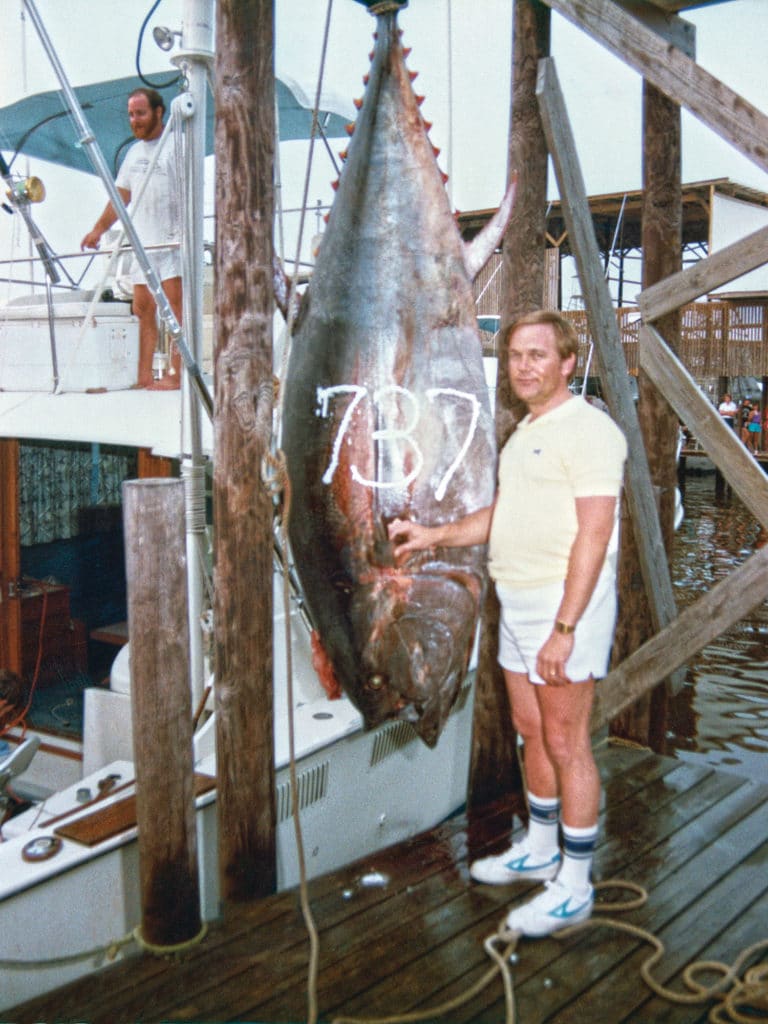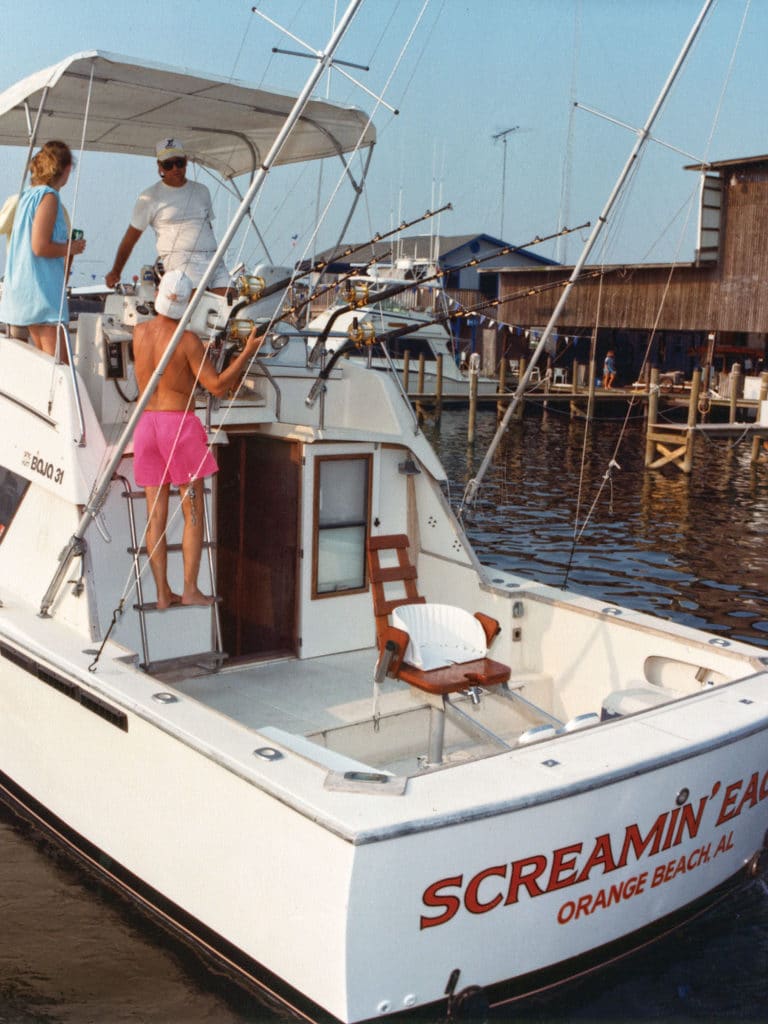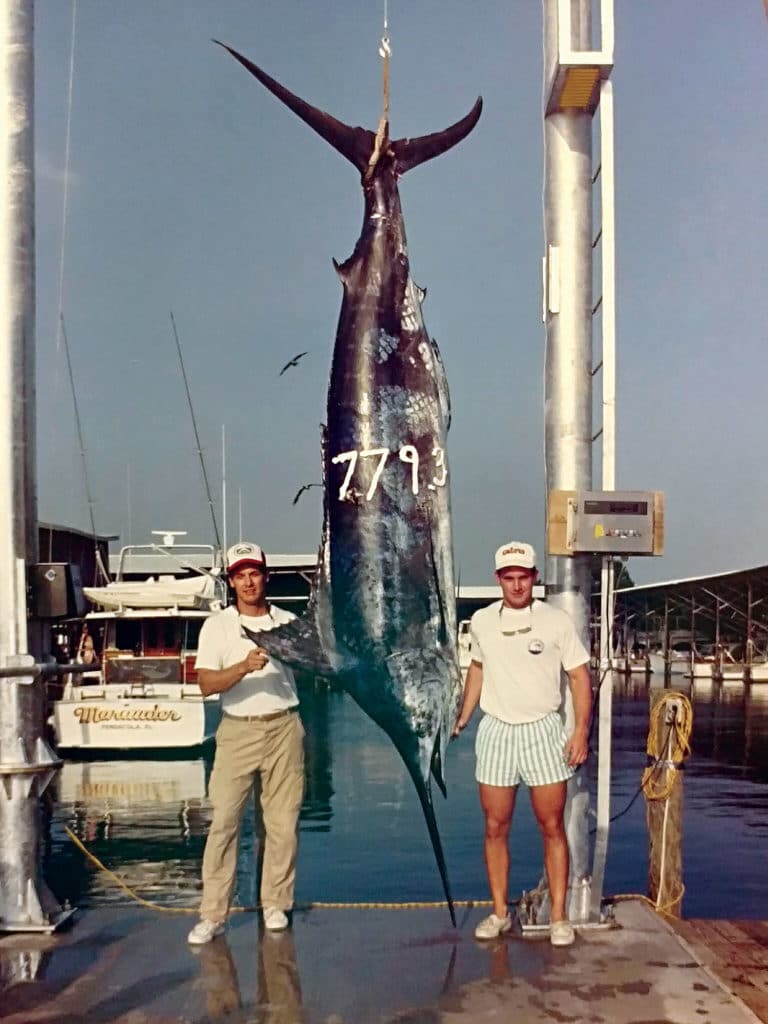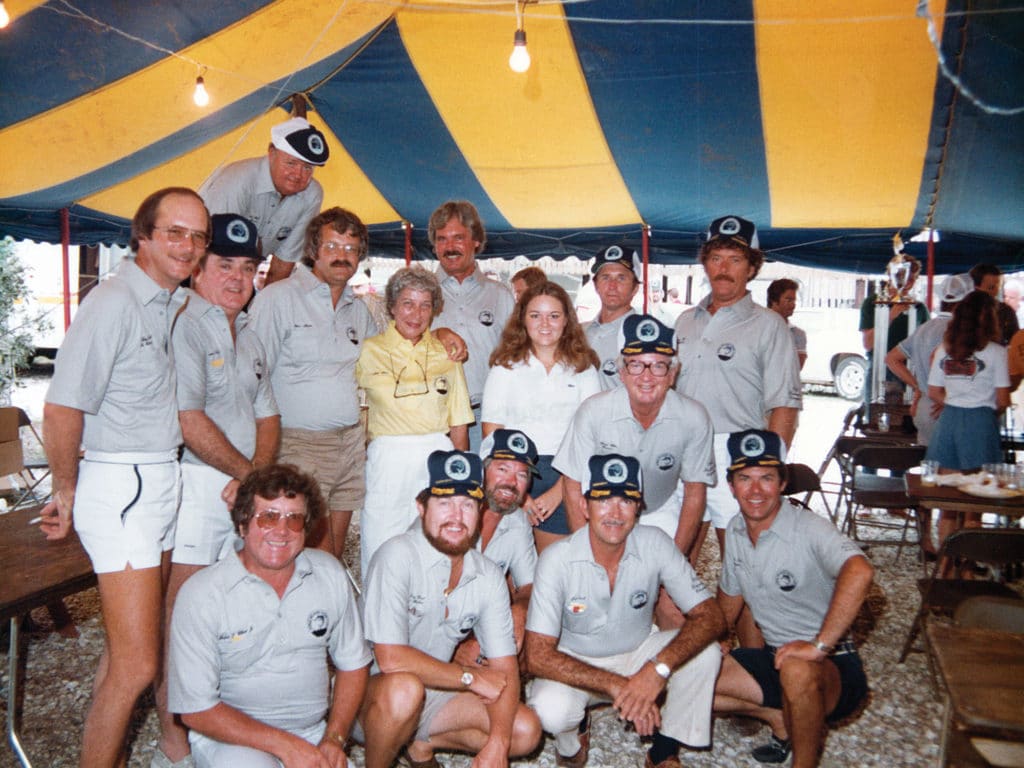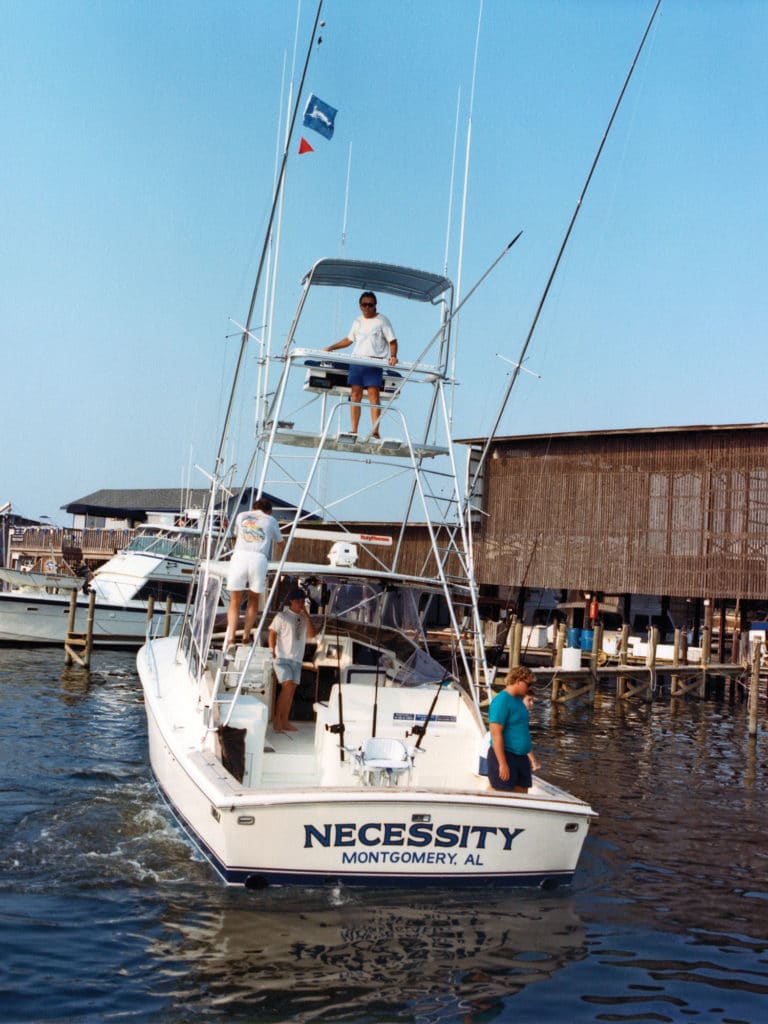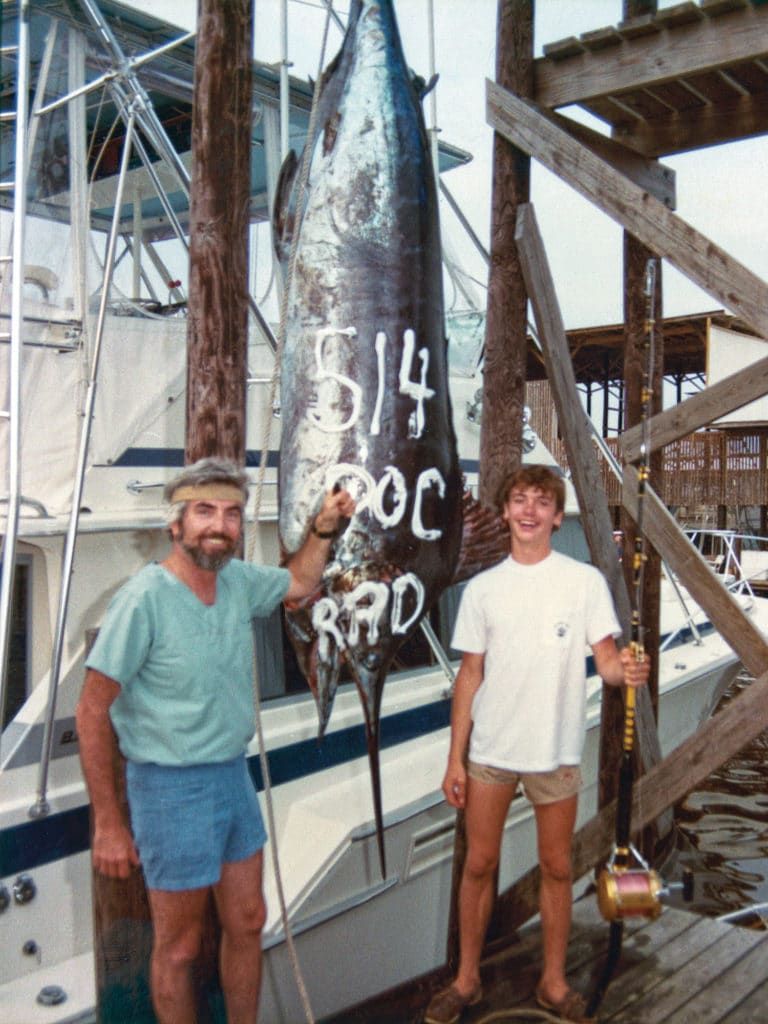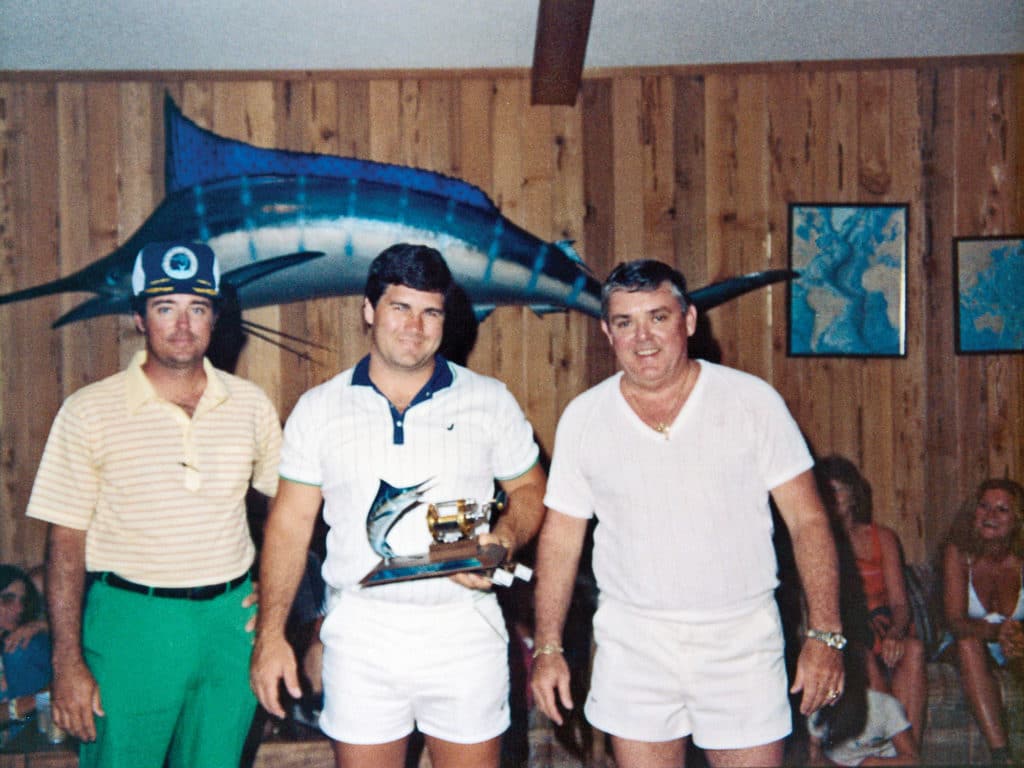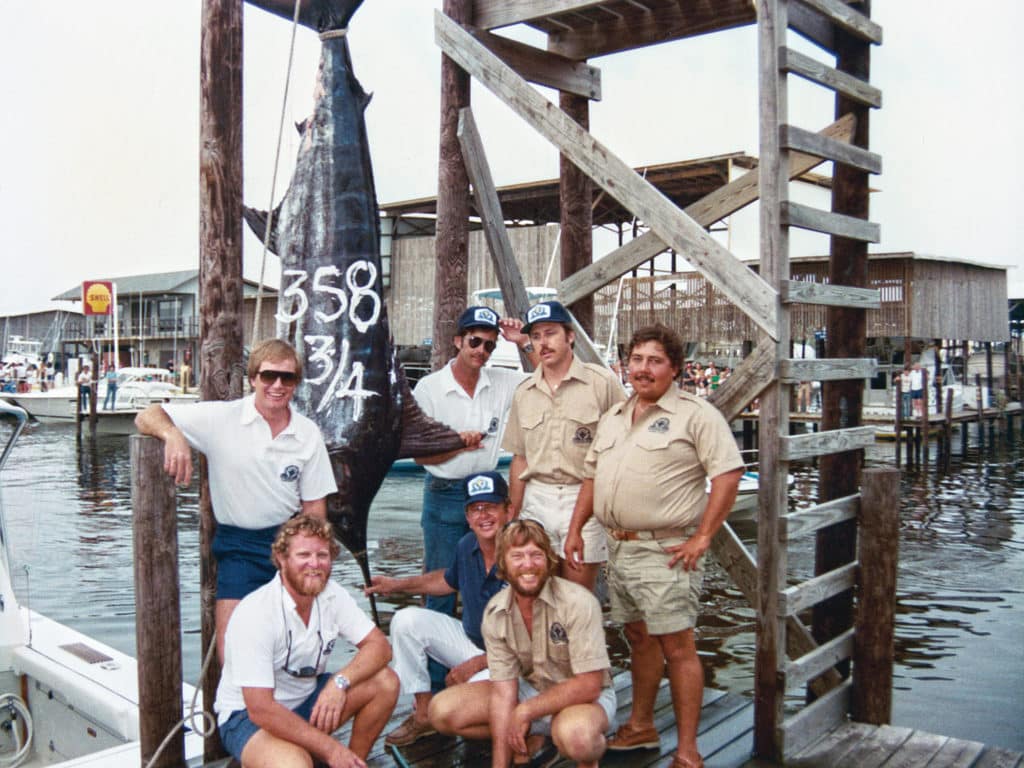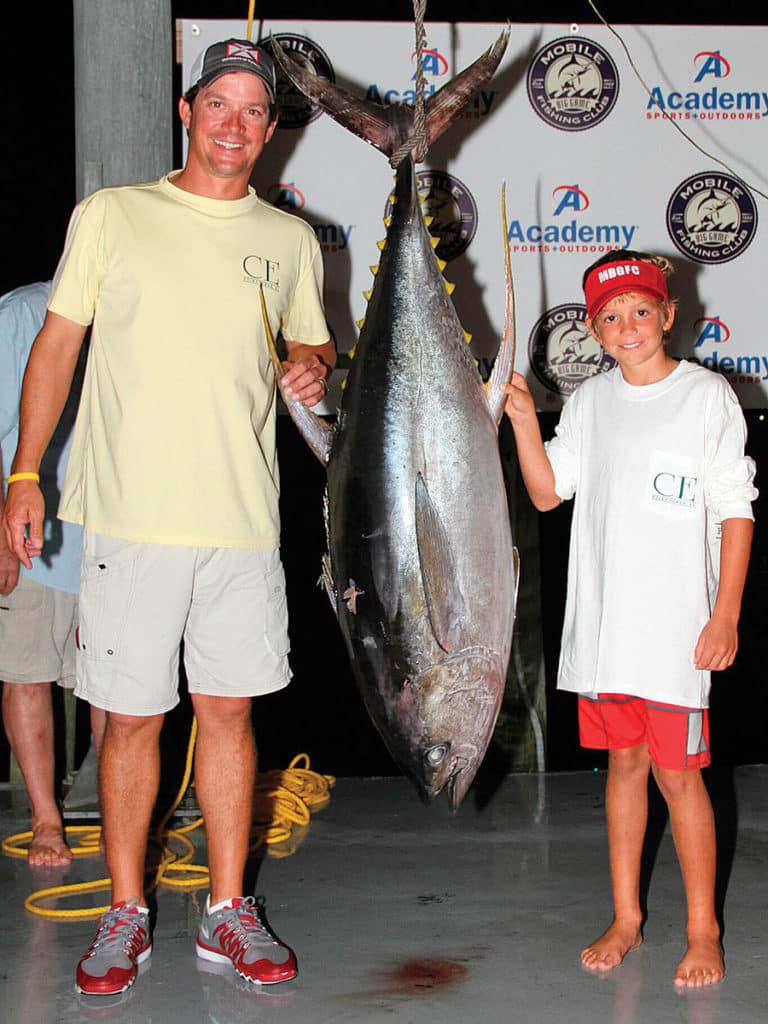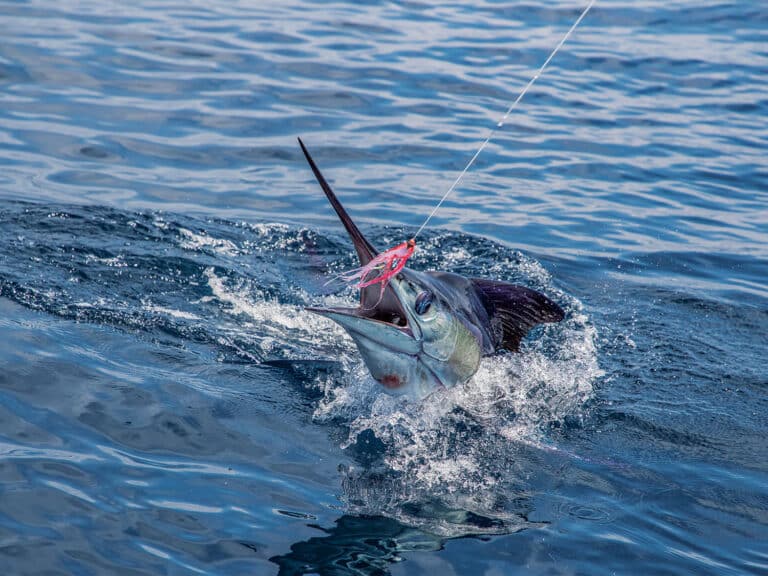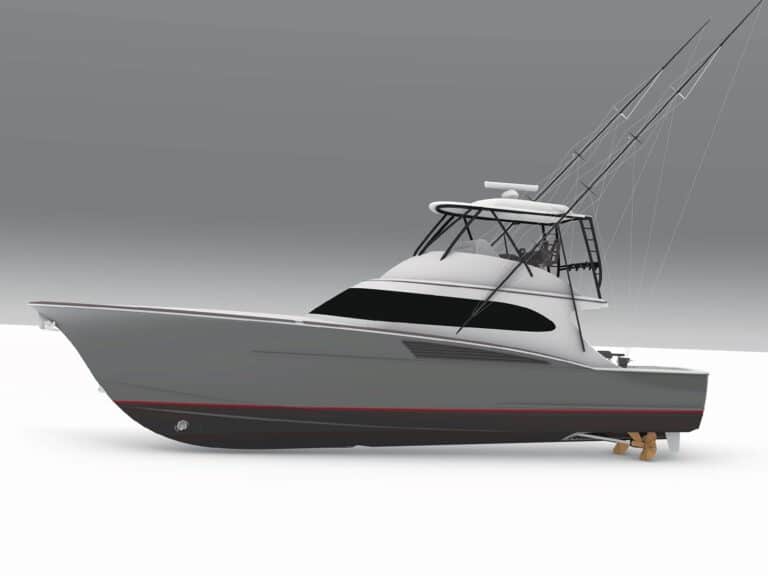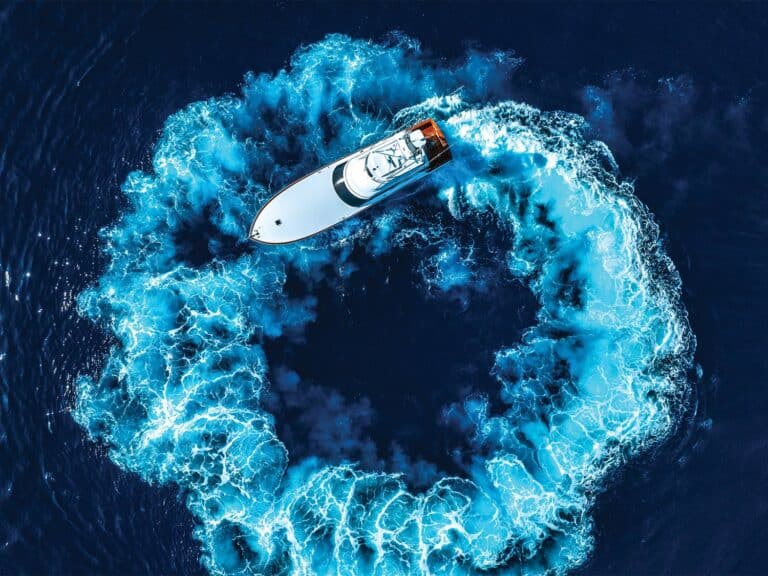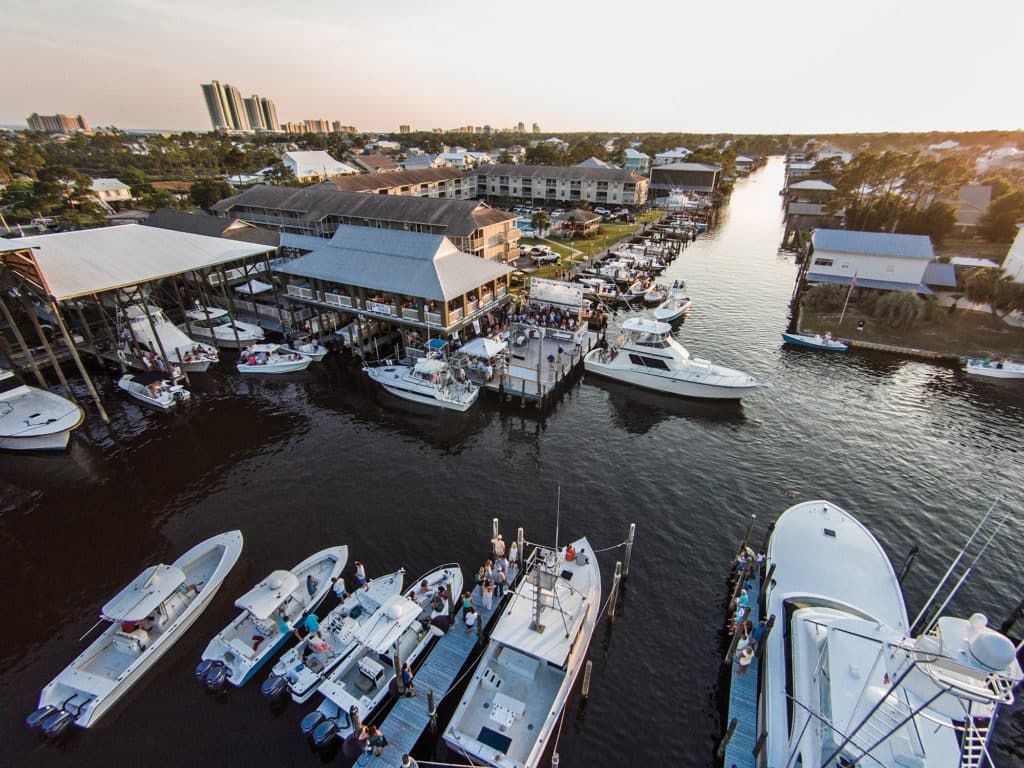
In 1964, Dennis Smitherman, the sports editor of the Mobile Press, wrote in a column, “Big game fishing was likely to develop into the newest industry along the Gulf Coast.”
Smitherman admittedly wasn’t much interested in fishing, but when he learned locals were catching the same billfish off the Alabama coast as those caught in faraway exotic waters, he knew something big was potentially on the Gulf horizon.
Mobile, Alabama, is known for many things, including the original home of Mardi Gras (a hotly debated claim from revelers in New Orleans), Jimmy Buffett’s childhood hometown and who knows how many cusswords for inadvertently importing fire ants into the United States. But big-game fishing? It seems Mobile has always been overlooked compared to other parts of the country. Say “Fat Tuesday” and most people immediately think of New Orleans, not Mobile. Each location claims ownership to the origins of parading parties, but the rivalry between the two cities extends beyond Bourbon Street, beads and MoonPies — it flows down the Mississippi River and into the blue water of the Gulf of Mexico.
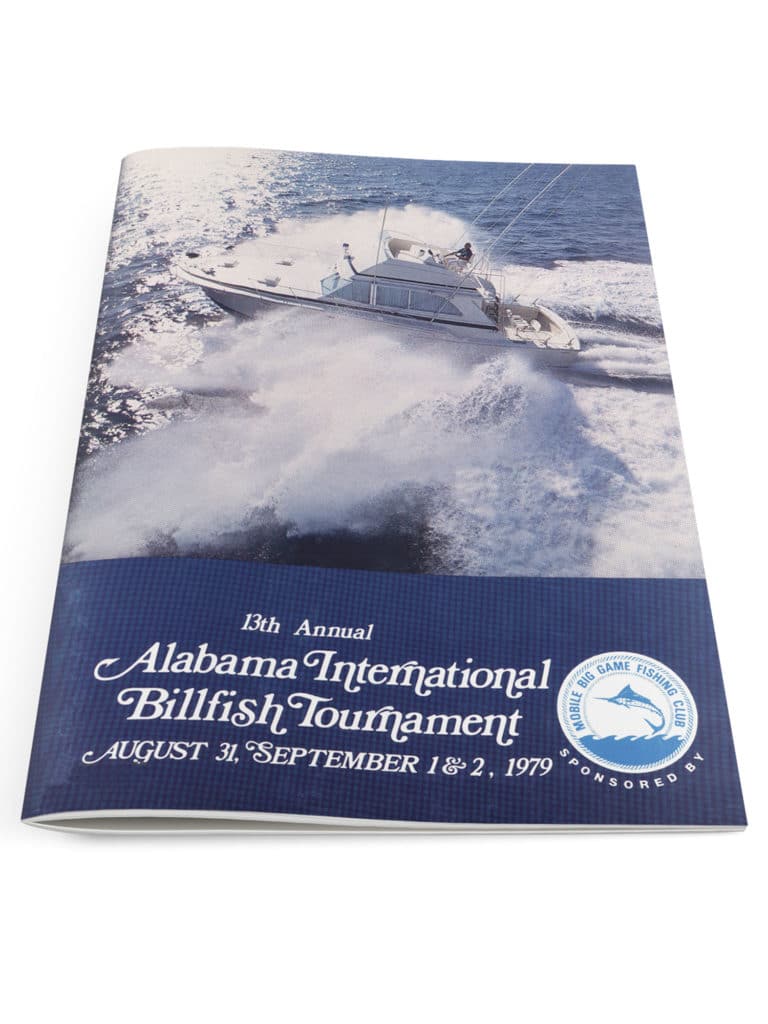
Beat ‘Em
In 1960, the New Orleans Big Game Fishing Club was up and running, and their tournaments were getting the attention of Mobile-based anglers and boat owners. The story goes that several Alabamians from Mobile, early pioneers in big-game fishing, applied for and were refused memberships into the Louisiana-based club in the early 1960s. If those gentleman couldn’t join ’em, they certainly wanted to beat ’em! So 50 years ago, on August 12, 1966, Dr. Robert H. Mudd, Max Rogers and Jere Austill Jr. founded the Mobile Big Game Fishing Club. From inception, the newly formed MBGFC focused on conservation and promoting the sport of big-game fishing — with maybe just a little dash of beating the members of the New Orleans Club in the soon-to-be-established inter-club tournaments.
The story goes that several Alabamians from Mobile, early pioneers in big-game fishing, applied for and were refused memberships into the Louisiana-based club in the early 1960s.
One of the missions of the MBGFC, as stated by the founding members in the original articles of incorporation, was “To sponsor and participate in tournaments designed to promote interest in, and knowledge of, the sport of big-game fishing. As well as to foster, promote and increase interest in and knowledge of the conservation of our natural resources, particularly the marine resources.”
For all the forethought the founding members put into conservation and promoting big-game fishing, maybe the single best decision made during the club’s formative years was picking the best weekends of the summer for their tournaments, even if they didn’t realize they were doing so.
Beginning back in 1966 and continuing today, the club has hosted an annual tournament on Labor Day weekend, weather permitting. “The club decided on the Labor Day weekend because they felt it would be a great way to wrap up the fishing season and the summer,” says Sonny Middleton, one of the earliest supporters of the club, its tournaments and sport fishing in the Gulf of Mexico. “I don’t think anyone in the 1960s could have envisioned the MBGFC tournaments growing like they have, no matter what weekend they were being held on.”
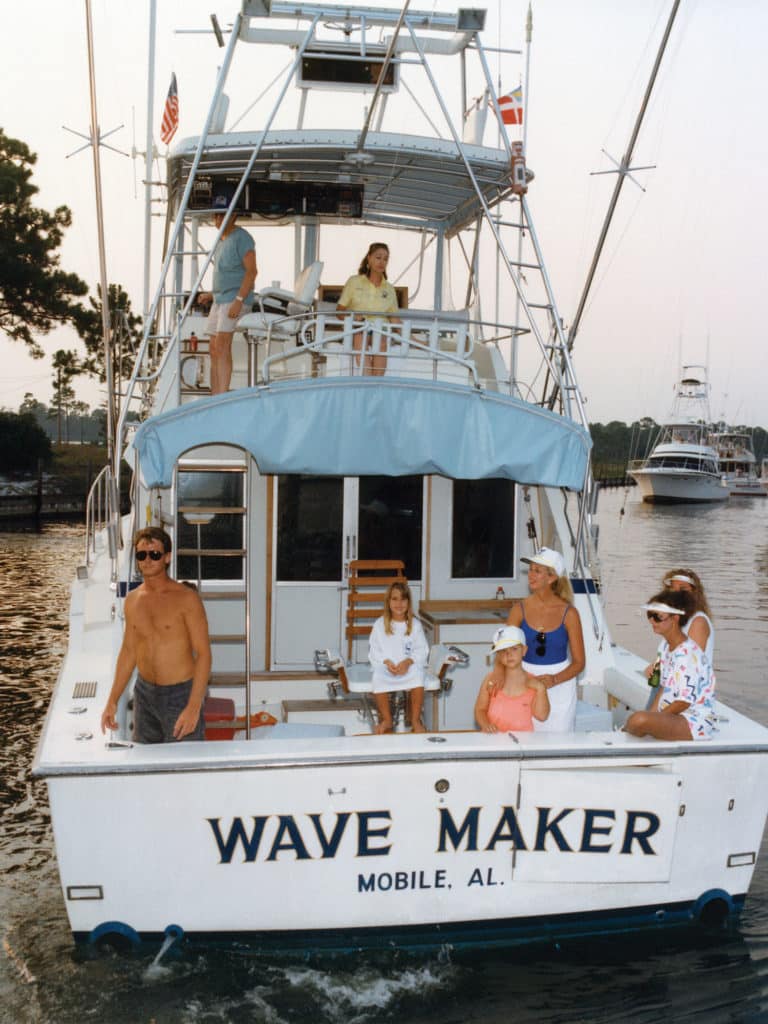
A Place to Call Home
In the early years, the club was a bit nomadic. They had a tournament but lacked a venue of their own. Soon the idea of building a clubhouse began to pick up steam like a rumor running through a marina of fishermen. Everyone loved the idea, but how would a young club pay for the construction? The decision to build a clubhouse would ensure the success of the club for generations to come, and it became a reality during the club’s annual membership meeting in late 1975. That evening, the incoming president and officers were to be elected. At one point, Ralston Reynolds stood in front of the crowd like a politician on the stump and made a bold promise: “If you elect me as club president, I will get us a clubhouse built.”
Maybe the difference between Reynolds and others running for office was that he also had the needed funding source to fulfill his promise. “We will pay for our clubhouse by adding another tournament,” said Reynolds, who was elected that evening. In May 1976, the Mobile Big Game Fishing Club held their first Memorial Day Tournament, subsequently becoming the owners of the two most sought-after tournament dates. This was the biggest decision ever made in the history of the club, and bookending the summer with the club’s two biggest tournaments has been paying dividends now for five decades.
It took four Memorial Day tournaments to save enough money to begin construction. Re-elected club president in 1979, Reynolds secured what became the permanent location for the clubhouse by negotiating a 50-year lease at the modest rate of $10 a year with Orange Beach Marina in Orange Beach, Alabama, where the clubhouse still stands today. The partially constructed structure survived Hurricane Frederick and was open for business in time for the 1980 tournaments.
Expanding Tournaments
Also during that time, the club continued adding to its tournament schedule to expand opportunities for anglers. In 1978, they added the Ladies Tournament, but it took only a few years of ladies winning prizes like rods and reels before the tournament was officially taken over by the women of the club — a policy still standing today. In 1984, the club continued its focus on family fishing by doing their first Junior Angler Tournament, where kids compete in categories ranging from catch-and-release for billfish to pinfish and everything in between. Ask any member with children and they will tell you that it’s their favorite event of the year.
In 1988, Mike Kennedy aboard Kwazar set the new Alabama state record for blue marlin during the MBGFC Memorial Day Tournament with a 687.8-pound fish. One year later in 1989, on the same boat and in the same tournament, Mike’s brother Marcus broke his brother’s record with a 779.3-pound blue marlin — a record that lasted another 24 years.
In 1999, the MBGFC added its first new tournament in 15 years, the Billfish Limited Tournament. Entrants to this event are limited to center console boats and inboards less than 32 feet. The driving force for starting this event was to create a tournament that promoted the sport of big-game fishing to the next generation, a duty placed upon the current board of directors by the founding members. “Our goal was to have a tournament where someone in a 21-foot center console could enter a big-game fishing tournament with a level playing field,” says Joe Crow, the inaugural tournament chairman. “It didn’t matter if it was your boat or if a bunch of college kids borrowed their father’s boat — we wanted an event that was all inclusive of the small-boat guys.”
The club invested in the new tournament by giving it five years to succeed or be dropped from the tournament schedule. The Billfish Limited, known affectionately as “The Monkey Boat Tournament,” celebrated its 18th anniversary this July and has unquestionably become the premier small-boat tournament in the Gulf by routinely drawing 40 to 50 teams each year. “Of course, center consoles aren’t nearly the monkey boats of the early years, but the tournament has been won by 26-foot boats two of the last three years — and that is exactly what we love about this event,” says Crow.
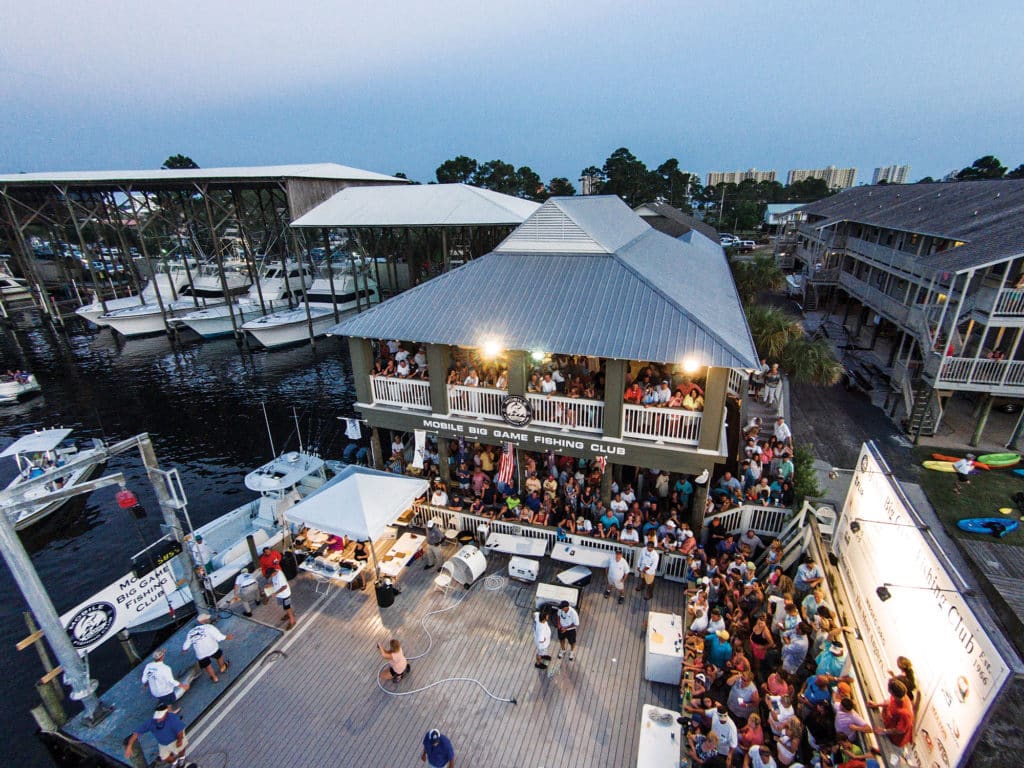
Big Money, Fun Times
Like most other tournaments in the Gulf, the past couple of decades have seen huge prize money become a part of MBGFC events. Optional cash awards have pushed total purses to nearly $1 million in both the club’s Memorial Day and Labor Day tournaments, with 100 or more boats fishing in each tournament. In 2004, the club began offering a $1 million prize to anyone who catches the Alabama state record blue marlin in either of those tournaments. Tournament interest was at an all-time high, and in 2007, the Memorial Day Tournament set a record with a whopping 137 boats.
Like a 500-pound blue marlin on 50-pound mono, the club has always stretched a tight line in faithfully keeping club tournaments affordable while maintaining the feel of a big event. Most big-game tournaments with high payouts have entry fees of several thousand dollars per boat, plus optional cash awards or jackpots. That has never been a working model for the MBGFC. Instead, the club insists on keeping entry fees very low and allowing each team to decide if they want to participate in optional cash entries. The per-angler tournament entry fee for a member is only $200, and nonmembers pay $250. That fee makes anglers eligible for all tournament categories and events. If a team is satisfied in competing for prizes and trophies, there is no requirement to enter any optional cash categories, making club tournaments an affordable option to participate in a high-profile event.
However, if a team does want to participate in optional categories, the action starts at just $125 and escalates to more than $50,000 if a team decides go across the board. Big fish produce big payouts, and we saw that during this year’s Memorial Day Tournament. Robert Burroughs, owner of Quicktime, flirted with collecting the $1 million prize for breaking the Alabama blue marlin state record of 845 pounds. His fish came up just one yellowfin tuna breakfast shy at 808 pounds, but he does now hold the honor of catching the largest marlin in the history of the club — in addition to earning him a payout of $164,000. Last year, this hybrid-formula resulted in 1,192 anglers fishing aboard 284 boats during the club’s tournaments held throughout the summer. Some were after part of the $1.6 million in cash that was paid out, while others just wanted bragging rights within the club.
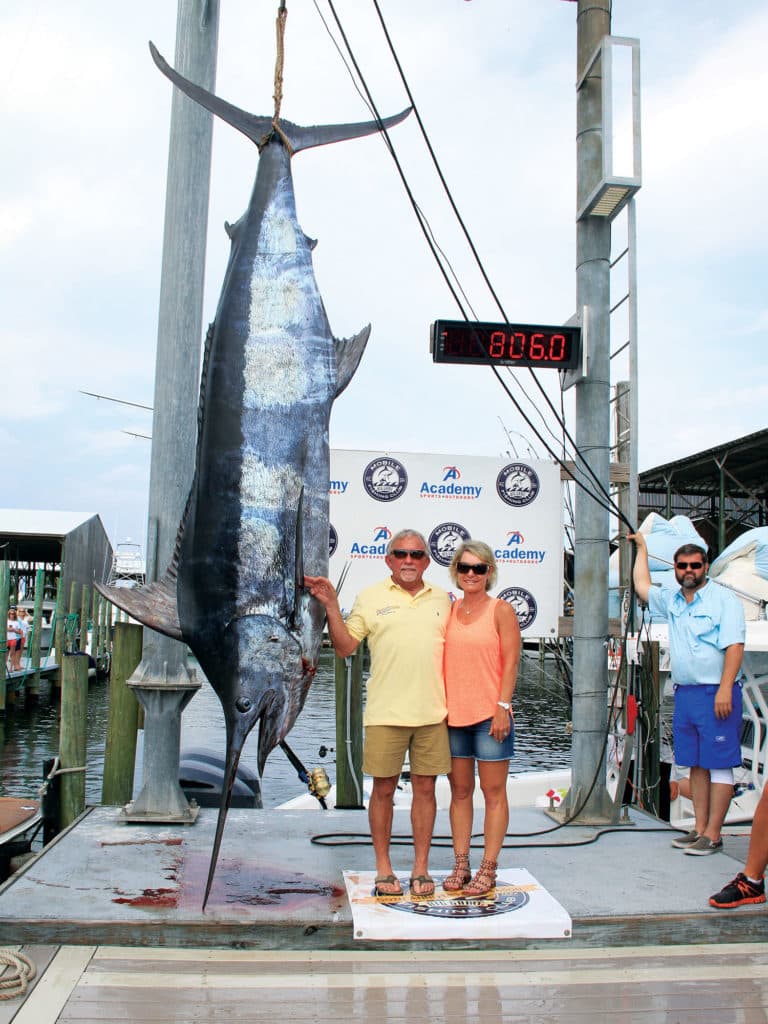
Conservation-Minded
The original members of the club didn’t have to envision today’s tournament scene to recognize the importance tournaments would play in the sport of big-game fishing for years to come. There was another short sentence in the articles of incorporation that led to maybe the greatest impact that the Mobile Big Game Fishing Club has made to date: The MBGFC will “affiliate itself with other organizations of similar purpose.”
Big-game fishing was still a pretty novel idea on the Gulf Coast in 1966, and there certainly weren’t all that many organizations of similar purpose, but the instructions were clearly defined. Thirty years after those words were written, the club began funding an annual scholarship for the biology department at the University of South Alabama, and a grant is also underwritten by the club for the Dauphin Island Sea Lab.
But if there is one group that embodies the spirit of similar purpose with the Mobile Big Game Fishing Club, it is The Billfish Foundation. In the last 10 years, the club has donated more than $200,000 to support the billfish conservation efforts of TBF. “The long-standing financial support has allowed, and continues to allow, our expertise to focus on billfish and tuna issues in the Gulf of Mexico,” says TBF president Ellen Peel. “In addition to the monetary contributions, conservation decisions by the MBGFC over the years have served as guideposts for other organizations.” Also, the MBGFC has always had the largest blue marlin kill minimum of any tournament in the Gulf of Mexico.
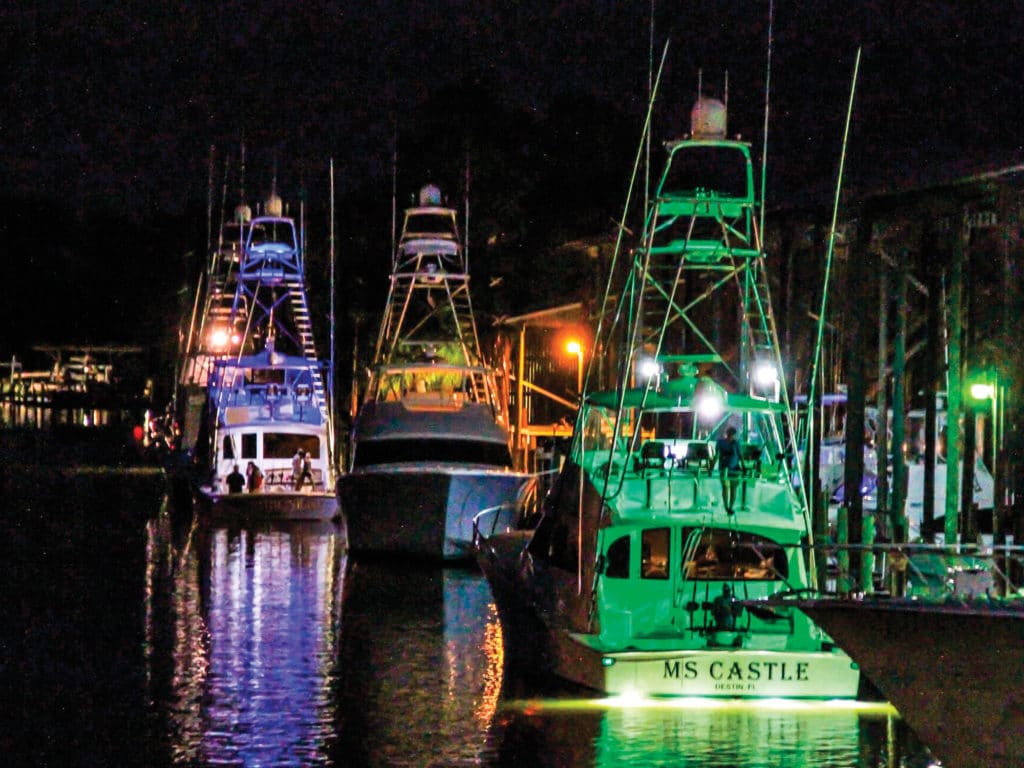
Poised For the Next 50 Years
Every big-game tournament has its own vibe and its own distinction. Some of them offer enormous payouts, while others offer participation exclusively by invitation. But if you’re looking for a high-profile event where you can bet big and go across the board in optional jackpots or just cobble together 750 bucks and split gas, bait and ice with a couple buddies on a holiday weekend, the MBGFC has what you’re looking for. Tack on the club’s other events where you can take your wife or your kids, or even hop in a center console, and your calendar could be filled with a variety of tournament offerings to keep your competitive side satisfied throughout the summer.
As the MBGFC reflects on its first 50 years, one must first look back and remember the event that spurred anglers from Mobile to found the club. Rather than exclude members, the goal of the club from the beginning was to promote the sport of big-game fishing. Through its successful tournaments over the years where numerous state records have been caught, the MBGFC helped spark big-game fishing in the Gulf and also put it on the map as a hot spot. Combine the rich history with camaraderie among members, the top-notch anglers and access to fantastic offshore fishing, and you can bet the MBGFC is poised for the next 50 years.
